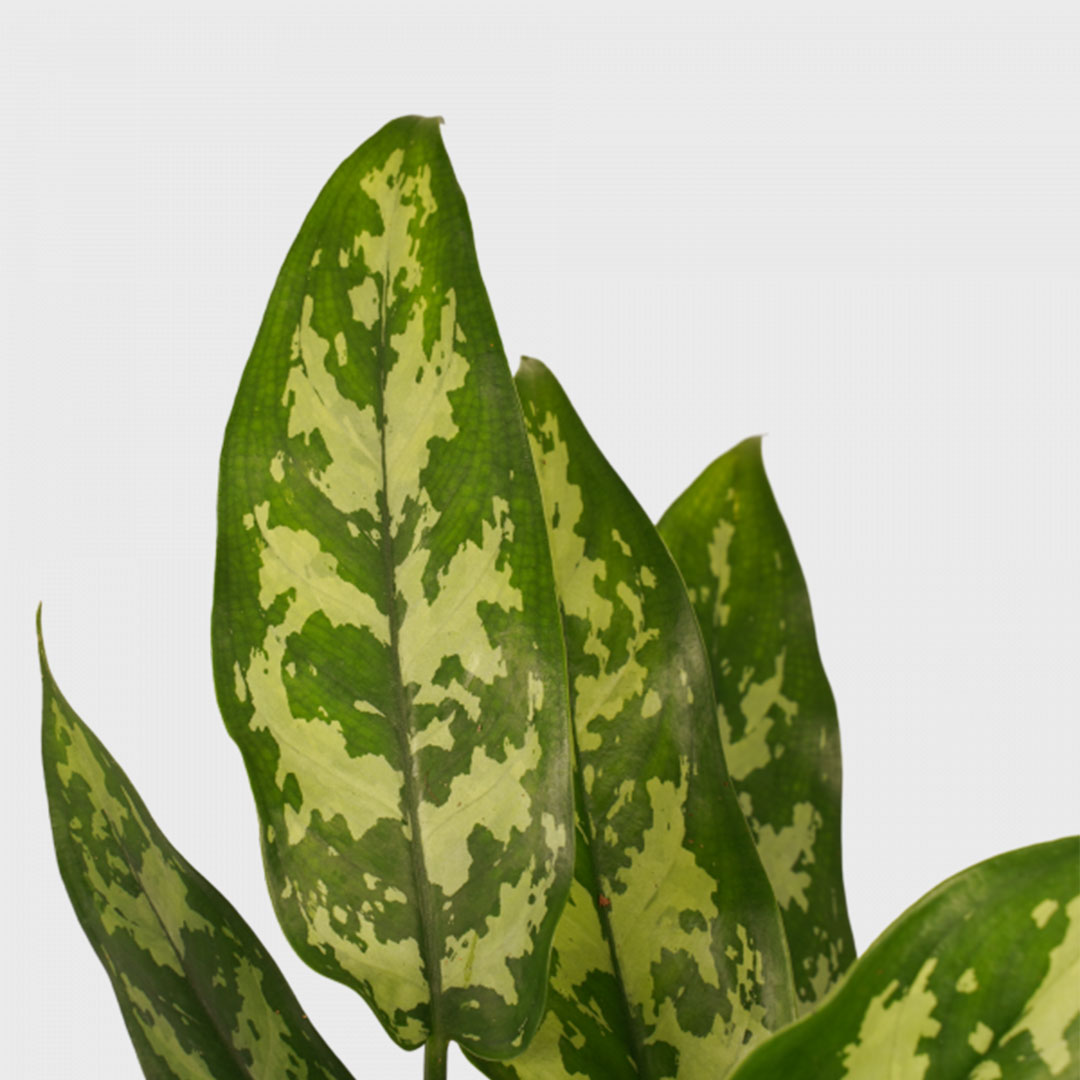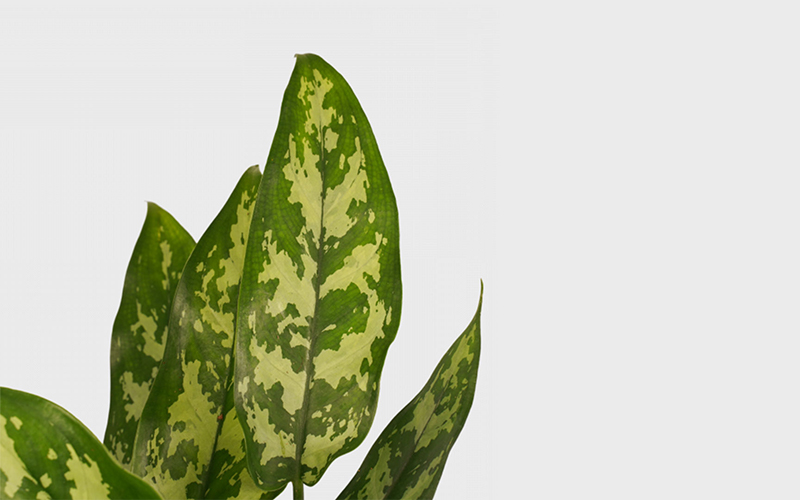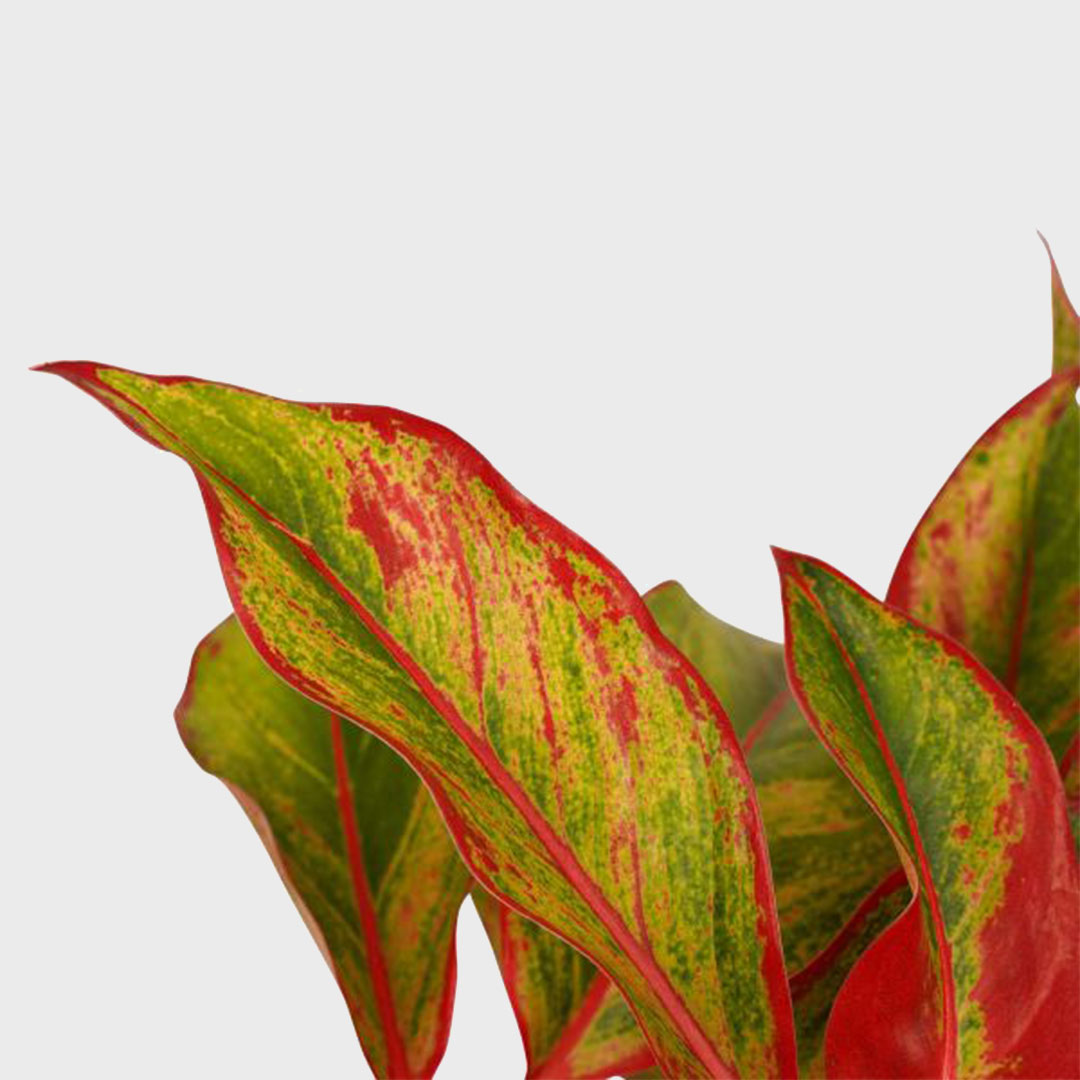
Deliver to
Belgium
 English
EnglishThe Aglaonema originates from tropical Indonesia. In nature the Aglaonema grows under large trees and plants. In turn, this plant grows just about right with little sunlight.
Aglaonema plants belong to the family Araceae, and come in no less than 55 different species. The nickname of the Aglaonema is Chinese Evergreen.
Chinese Evergreens don't need much water. You can water it when the potting soil feels slightly moist to dry. However, humidity is a must for this plant, so keep a plant spray close, as it's important to spray it regularly.


Low light
Water every 2 weeks
Toxic
Air-purifying
The Aglaonema grows under large plants and trees in nature. The plant itself does not grow very large either. Around 90 cm is really the maximum length for an Aglaonema. It is therefore best to place the Aglaonema on a spot with half shade. He is more than happy with shade!
Does the plant get a bit too much light? Then it will grow faster too. Although the leaves may burn if there is too much light. In total, the Aglaonema as an indoor plant needs a maximum of 3 hours of medium light.
In summer it is important to keep the soil of the Aglaonema slightly moist. You can achieve this by watering once a week to once every 1.5 weeks. Pay attention to the amount of water the plant gets. The Aglaonema doesn't like wet feet.
As soon as autumn arrives, you can shift the watering to once every two weeks. From then on, you may water less. In winter you can dry the soil out. In any case, never water more than necessary! Do you? Then the Aglaonema can develop root rot. Not something that will make you and your plant happy.
It is not necessary to give the Aglaonema plant nutrition. This is because the Aglaonema uses little nutrients. If you want you can give plant nutrition once a month in the summer. It is best to use Pokon’s Aglaonema plant nutrition. We recommend feeding only from spring until the end of the summer. In any case, it is wise to not give too much plant nutrition. This can be harmful to the Aglaonema.
Repotting is not necessary every year. However, we do recommend buying a larger flowerpot for the plant every 2 years. It is best to choose a flowerpot that is at least 20% larger than its previous one. This gives the Aglaonema more space to grow and the fresh soil has new nutrients too. Repotting a plant is best done in the spring at all times. Repotting can damage roots and in spring a plant has the most energy to repair the damage.
The most ideal temperature for an Aglaonema, also known as Chinese Evergreen, is between 18 to 24 degrees Celsius. It prefers a warm and moderate climate and does well in indoor environments.
Pruning an Aglaonema is not necessary for its growth, but it helps remove any yellowed or damaged leaves, encourages new growth, and promotes a more compact and attractive appearance. Trimming back excessive growth can also help maintain a balanced and bushy shape. Clean and sharp pruning tools should be used to make clean cuts and avoid damaging the plant.
In the nature of Indonesia the Aglaonema lives in humid areas. As an indoor plant, the air for the Aglaonema can quickly become too dry. If the air is too dry, the Aglaonema can suffer from spider mites. In a few cases, the plant can get shelled or mealybugs too. The mealybugs can be combated with a large amount of water. For spider mites or aphids it is best to use a pesticide.


An Aglaonema will not grow very large. They can reach a maximum height of 90 cm, but usually only reach 60 cm.
Aglaonema plants can indeed flower. However, it is rare for an Aglaonema to flower. If the Aglaonema does flower, you will find the flowers underneath the leaves. It is wise to remove the flowers, because they consume a lot of energy.
Yes, you certainly can. Check out our tips on how to propagate an Aglaonema.